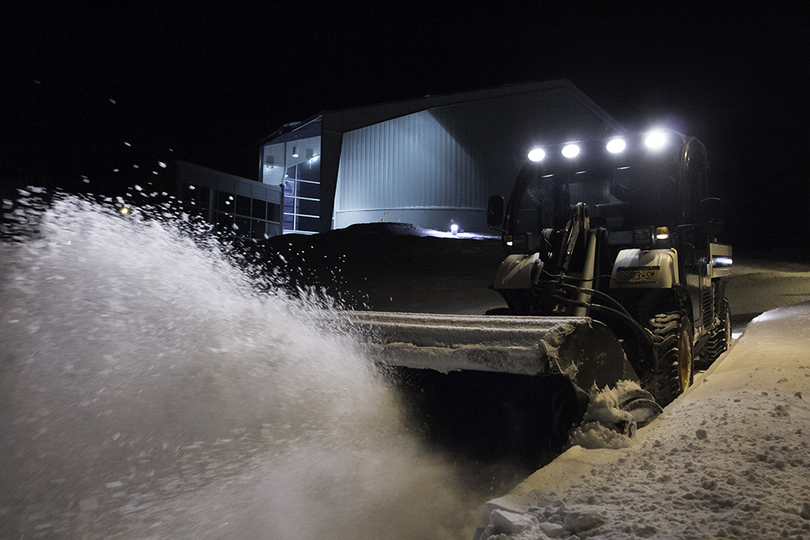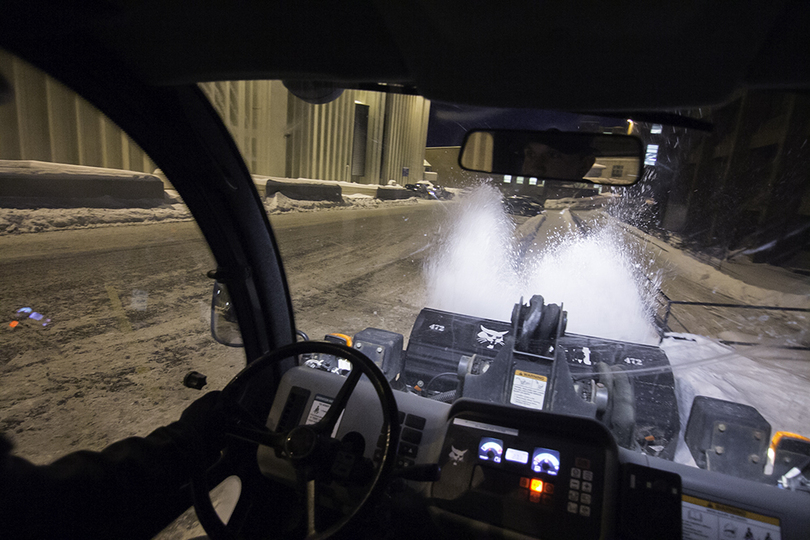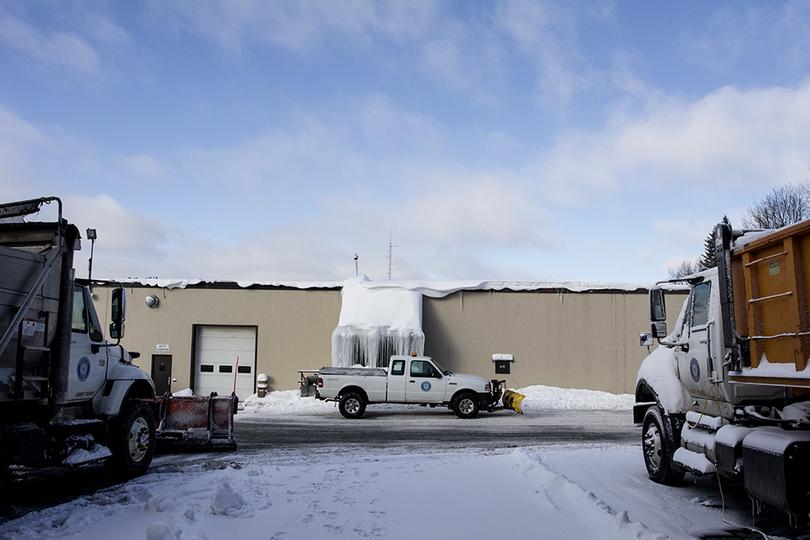Physical Plant uses extensive operation, dedicated employees to remove snow around SU campus
Tenytha Oates often thinks of what it would be like to hold an office job. When the temperature is subzero and her fingers are numb, she said she thinks of her goal of getting a degree in social work.
“I’m not going to do this all my life,” she said.
Oates, who has worked at Syracuse University for 16 years and at the Physical Plant for six, is a laborer, which means shoveling snow, clearing stairs and walkways and other areas where plows can’t get to. But when the snow isn’t coming down, Oates is taking one class at a time in hopes of one day becoming a social worker and getting a degree from SU.
Oates is one of about 60 employees for the Physical Plant’s grounds department in the winter, which is tasked with removing the large amounts of snow that fall on the SU campus. On average, Syracuse gets more than 100 inches of snow each winter, and has garnered 86.4 inches as of Tuesday, according to Golden Snowball, a website that tracks upstate New York snow totals.
The process to remove the snow involves a “do what you have to do to get it done” mentality and requires care 24/7, said Rich Stach, the manager of the Grounds, Landscaping, Utilities and Projects division of the Physical Plant.
“The dedication here is tremendous. Our people, if it wasn’t for them, the 12-hour days and so on and so forth that these guys have to work most of the time when it snows would be difficult,” Stach said. “We try the hardest we can to keep the campus safe and clean and these are some dedicated individuals.”
Oates’ first alarm goes off at 1 a.m. and she wakes up around 2:30 a.m. It’s then time to check on her cat, True Love, and her ferret, Tookie, before getting ready for the day. It’s not a suit and tie or a blouse like an office job she thinks of. Rather, it’s four shirts, two hoodies, two jackets and four pairs of pants. It’s then time for work.
Her shift begins at 4 a.m. Oates has to make sure that when students wake up in the morning it’s safe for them to get to class. But it’s not always easy, she said.
“The hardest part basically is the shoveling. But not in the beginning,” she said. “In the beginning you’re going steady, but if you’re shoveling with a month straight, your body starts to shut down. So you’re trying to throw that snow over the high snow bank, it’s not getting there.”
There are 14 miles of roads, 20.5 miles of sidewalk, 189 curb cuts, 22 handicap ramps, 678 stoops and entrance ways, 90 emergency entrances and 2,979 stair treads that need to be cleared.
To clear that much space, the Physical Plant has five street plows, four large pay loaders, 18 pickup truck plows, 17 small side walkway plows and 13 laborers such as Oates.
“It’s just a vicious circle that we do to keep our campus clean,” Stach said. “Our most challenging part is when it snows one inch an hour, it’s just like a train, we keep circling and circling and circling, and we try and keep it safe for the campus.”
Oates is responsible for removing snow near Haven and Booth Halls, and said she takes pride in the area she’s responsible for. As someone who has taken classes at SU, she said she sees the needs to have the roads and sidewalks clear.
“I’ll just be walking around and I’ll be like, ‘Yes, I work here and yes, I did that,’” she said. “Even if it’s voluntary time, I’ll volunteer for it because I want that area done. I know how the kids are. A lot of them haven’t seen this much snow so they’re not really prepared so I want them to have a clear shot.”
Scott Reynolds, a heavy equipment operator for the Physical Plant who has been at SU for about 37 years and had two children graduate from SU, also takes pride in his work with snow removal.
Reynolds, who works in a plow rather than on the street shoveling, said it can be dangerous when students are on their cellphones and not paying attention to what’s around them. “They’ll get really close to you,” he said.
Reynolds, also a Syracuse native, said days where there are severe cold temperatures can cause some additional problems. “You’ve just got to deal with it, that’s all,” he said.
Cold days slow down the pace one can work at, Oates added, saying that her hands often get cold, despite the layers.
“Especially my pinkies, they just get really numb and I had to stop and stand there,” Oates said, putting her hands in her jacket.
But while she’s in the cold shoveling, she remains determined to get the degree. She’s still in the beginning, working through math and English and textual studies courses, but it’s a feat she takes pride in, like the clean sidewalks and cleared SU campus on a day-to-day basis.
“A lot of people thought I couldn’t do it because I’m a female and I couldn’t shovel and do all that,” Oates said, “but they all don’t know me. I do what I have to do.”
Published on February 18, 2015 at 12:01 am
Contact Justin: jmatting@syr.edu | @jmattingly306







